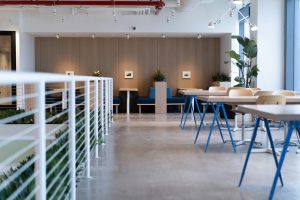The Evolution of Transportation Hub Design
The transportation industry has undoubtedly evolved over the years, with transportation hubs being at the forefront of this evolution. These hubs are not just a place to catch a train or a bus; they have become multifunctional spaces that incorporate elements of design, technology, and sustainability. The design of transportation hubs has come a long way, from merely serving as functional structures to becoming iconic landmarks that showcase a city’s identity. In this article, we will take a closer look at the evolution of transportation hub design and its impact on the way we travel and experience urban spaces.
The Functional Beginnings
Back in the late 19th and early 20th centuries, transportation hubs were primarily designed to serve as functional structures. They were built to handle large volumes of people, with minimal consideration given to aesthetics. The focus was on creating spaces that efficiently moved people and goods from one point to another. As a result, most transportation hubs were large, utilitarian buildings with a simple design and utilitarian features.
Early transportation hubs were typically located on the outskirts of the city, away from other urban developments. This was because they needed to be in close proximity to train tracks, ports, and airports. However, as cities expanded, transportation hubs became more integrated into the urban fabric, leading to the concept of the urban transportation hub.
The Rise of the Urban Transportation Hub
As cities grew and became more congested, the need for a more sophisticated transportation system became apparent. This gave rise to the urban transportation hub, where different modes of transportation intersected, such as trains, buses, and subways. These hubs not only served as a point of arrival and departure but also became key meeting points and business centers.
The design of urban transportation hubs was heavily influenced by modernist principles, with a focus on functionality and efficiency. The main goal was to create a seamless and convenient experience for travelers. This led to the development of innovative features such as elevated walkways, moving walkways, and escalators, all aimed at improving the flow of people within these bustling hubs.
Aesthetic Considerations and Iconic Designs
As cities continued to evolve and modernize, transportation hubs saw a shift from a purely functional design to one that also considered aesthetics. Architects and urban planners started to view transportation hubs as potential landmarks that could enhance a city’s identity and serve as a symbol of progress and modernity. This led to the emergence of iconic designs for transportation hubs.
One of the most famous examples of this is New York City’s Grand Central Terminal, designed by architectural firm Warren and Wetmore. The Beaux-Arts style building features a grand façade, with a stunning clock tower and majestic entrance hall. The terminal’s design not only showcases the city’s grandeur but also serves as a functional and efficient transportation hub.
Sustainability and Technology
In today’s world, sustainability and technology have become key considerations in the design of transportation hubs. With growing concerns about climate change and the need for more eco-friendly structures, many transportation hubs now incorporate sustainable features such as green roofs, solar panels, and rainwater harvesting systems.
Technology has also played a significant role in the evolution of transportation hub design. With the advent of smart cities, transportation hubs are now equipped with cutting-edge technology to improve the overall experience for commuters. This includes features such as real-time updates on schedules, smart ticketing systems, and even interactive displays that provide information about the surrounding area.
The Future of Transportation Hub Design
As technology and sustainability continue to shape the world around us, it is safe to say that the design of transportation hubs will also continue to evolve. With the rise of autonomous vehicles and the concept of mobility-as-a-service, transportation hubs may become even more multifunctional in the future. They could potentially incorporate features like co-working spaces, retail stores, and even residential units, making them true city centers.
In conclusion, the evolution of transportation hub design has been a journey of functionality, aesthetics, and sustainability. From simple, utilitarian structures to iconic landmarks, transportation hubs have transformed into dynamic, multifunctional spaces that play a crucial role in shaping our cities and how we travel. As we continue to move towards a more connected and sustainable future, it will be exciting to see how transportation hubs will continue to evolve and shape our urban landscapes.











